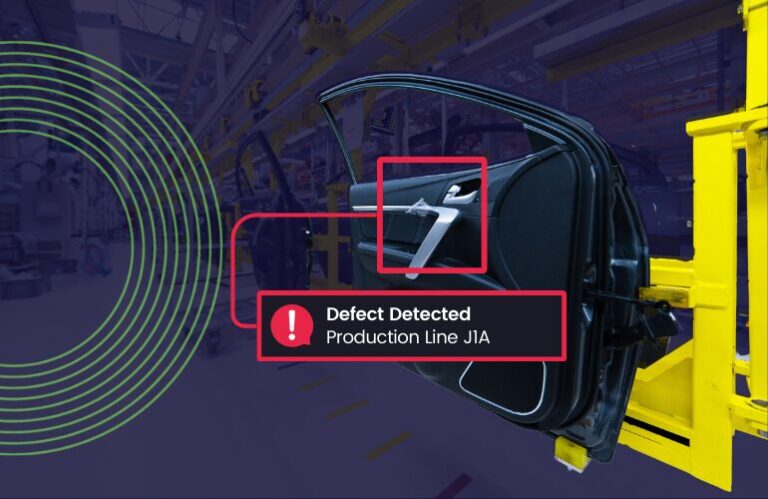
AI-generated Defect Detection Models: Transforming Quality Control in Manufacturing
Estimated reading time: 11 minutes
Key Takeaways
- AI-generated defect detection models offer fast, scalable, and highly accurate quality control for manufacturers.
- Synthetic data for training inspection systems helps solve real-world data shortages and prepares AI for rare or unseen defects.
- Modern generative adversarial networks (GANs) in manufacturing play a pivotal role in creating realistic synthetic defect data for robust AI training.
- Latest AI vision drastically helps in reducing false positives during automated inspections, saving time and resources.
- Industry case studies of AI in QC show tangible ROI, smoother workflows, and reduced waste.
Table of Contents
- What Are AI-generated Defect Detection Models?
- Why Synthetic Data is Used for Training Inspection Systems
- Generative Adversarial Networks (GANs) in Manufacturing
- Reducing False Positives with AI Vision
- Case Studies of AI in QC
- Considerations for Adopting AI-generated Defect Detection Models
- Conclusion
- FAQ

What Are AI-generated Defect Detection Models?
AI-generated defect detection models are computer programs powered by artificial intelligence—especially deep learning—that automatically find flaws in manufactured products. These systems analyze images and sensor data to pick out surface scratches, microcracks, color shifts, or subtle shape deformities.
Curious about data-driven manufacturing? Read What is Data-Driven Manufacturing? Exploring Its Role, Benefits, and Challenges in Modern Industry.
- Speed & accuracy: AI can spot flaws in seconds—far faster and with fewer oversights than manual inspection.
- Capable of catching tricky defects: Even subtle and inconsistent problems become visible to these advanced models.
- Runs around the clock: Inspections never tire out; they can keep up with non-stop factory lines.
- Continuous improvement: New data keeps models learning, staying sharp for changing production needs.
For example, if a faint scratch appears on a car part, an AI system can isolate and flag it—even when humans miss it after long shifts.
Challenge: AI models need plenty of high-quality data from both perfect and defective products. Rare defects may lack enough sample images, risking “overfitting”—where models end up specialized for a narrow data set and falter on real-life production lines.
For deeper insights into the synergy between digital twins and live data, explore What is a Digital Twin in Manufacturing? Understanding Its Role and Benefits in Smart Factories.
References: MobiDev, NeuroSYS, Elisa IndustrIQ
Why Synthetic Data is Used for Training Inspection Systems
Synthetic data for training inspection systems refers to computer-generated yet realistic images (with and without defects) that supplement or even replace real world training samples.
See more ways generative AI and synthetic data are advancing manufacturing.
- Scarce defect samples: Critical defects may only occur once in thousands of products—so real samples are tough to collect.
- Diverse data for balanced learning: By simulating all sorts of flaws, synthetic data prevents bias and helps the model spot even rare or novel errors.
- Faster labeling, less manual work: Creating and labeling 10,000 defect images in software is far faster than relying on months of real-world collection and annotation.
Example: Only one in ten thousand glass bottles has a microcrack. But with synthetic data, you can make a dataset where these defects appear as often as needed for robust AI training.
To see how live AI pipelines feed inspection models, read Building Real-Time Data Pipelines for Factories: Tools, AI, Security, and Implementation Guide.
Reference: AWS Blog – Generative AI for Defect Detection
Generative Adversarial Networks (GANs) in Manufacturing
Generative adversarial networks (GANs) are advanced AI that generate life-like images or data—including realistic defective samples for factory training sets.
For context on how GANs fit into the evolving automation landscape, check How AI is Transforming Industrial Automation: Enhancing Efficiency, Quality Control, and Future Trends.
- Create rare/new defects: GANs can quickly produce thousands of unique problems for training, covering ever-changing real-world scenarios.
- Diversity for robustness: More varied, high-fidelity defects = AI that is better at generalizing to production surprises.
- Superior training: Avoid overfitting—GAN-fed models learn to “see” the underlying pattern, not just memorize examples.
Real-world example: AWS and DXC Technology used GANs and Stable Diffusion to generate synthetic surface defects. The result: detection rates improved, plus the inspection system handled new product varieties without struggle.
Interested in predictive maintenance? See What is Predictive Maintenance in Manufacturing? A Comprehensive Guide.
Reference: AWS Blog – Generative AI for Manufacturing
Reducing False Positives with AI Vision
Reducing false positives with AI vision is critical: a “false positive” means the AI wrongly flags a flawless item as flawed, wasting money and production time.
See more on how reducing false positives impacts key metrics in Key Manufacturing KPIs to Track with IIoT: Enhance Efficiency and Optimize Factory Performance.
- Unnecessary rework: Even good products get halted or scrapped, raising costs.
- Production delays: False alarms slow down the factory line.
- Material waste: Perfect products may be discarded by mistake.
How modern AI vision helps:
- Training with diverse, synthetic, and GAN-generated data helps the AI tell harmless variations (dust, marks) from critical defects.
- Better algorithms (like anomaly detection) boost precision and self-correction.
- Constant feedback lets AI retrain and improve, so the system gets smarter over time.
Reference: NeuroSYS
Case Studies of AI in QC
The real world is seeing the power of AI-generated defect detection models across many industries.
More on robots in manufacturing? Visit Self-learning Robots in Assembly Lines: How AI Is Transforming Modern Manufacturing.
HCLTech: Real-time AI-powered Defect Detection
- Company: HCLTech
- Challenge: Manual checks missed flaws, and couldn’t scale with rapid production.
- AI Solution: Deployed AI-generated defect detection models based on neural networks, blending in synthetic data for training inspection systems.
- Results:
- Higher product consistency and quality
- Lowered waste, less rework
- Reduced costs
- Much faster inspections
- Key insight: AI plus synthetic data makes for fast, accurate, and reliable QC.
Source: HCLTech Case Study
DXC Technology & AWS: GAN-powered Synthetic Data for QC
- Company: DXC Technology & AWS
- Challenge: Hard to gather images of rare defects—production was too varied and fast.
- AI Approach: Used generative adversarial networks (GANs) in manufacturing to simulate those rare flaws for training.
- Results:
- Caught even rare mistakes
- Scaled AI vision to many different products
- Lowered false positives with AI vision; QC was more trusted by operators
- Key insight: GAN-generated synthetic data revolutionizes the speed and effectiveness of AI QC systems.
For further case studies, see How IIoT is Transforming Manufacturing: Applications, Benefits, and Success Stories.
Source: AWS Blog Case Study
Considerations for Adopting AI-generated Defect Detection Models
Before launching AI-generated defect detection models, manufacturers must lay proper groundwork.
Understand the role of IIoT for integration in Understanding IIoT Platforms: Key Features, Benefits, and Future Trends.
- Data Check: Do you have enough defect samples for proper training? If not, will synthetic data for training inspection systems or GANs fill the gap?
- System Integration: Will the AI solution smoothly fit with current cameras, robotics, and software?
- Rollout Strategy: Start with pilot projects; measure improvements; retrain regularly as products change;
- Experienced Partners: Work with experts to speed up development and ensure support post-deployment.
Conclusion
AI-generated defect detection models, supercharged by synthetic data for training inspection systems and generative adversarial networks (GANs) in manufacturing, are ushering in a new era of efficiency and quality.
- They bring unbeatable accuracy and flexibility—finding more defects, more reliably, night and day.
- Systems scale as needed, serving agile startups and global players alike.
- Savings from reducing false positives with AI vision flow straight to the manufacturer’s bottom line.
For deeper data-driven manufacturing strategies, review Key Manufacturing KPIs to Track with IIoT: Enhance Efficiency and Optimize Factory Performance.
The transformation is happening now. Manufacturers who adopt these tools get competitive edge, less waste, and more loyal customers. Pilot projects and partnerships are smart first steps to begin this journey—to better quality, cost savings, and a future-ready business.
References: Elisa IndustrIQ, NeuroSYS
FAQ
Q: What are AI-generated defect detection models?
They are artificial intelligence systems—usually based on deep learning—that scan products for quality issues automatically. These systems learn from large collections of defect and defect-free images, often accelerated by synthetic data and GANs.
Q: Why is synthetic data important?
Synthetic data fills in the gaps when there aren’t enough real images of rare defects. It provides diversity and balance for machine learning models, making them perform better in production.
Q: What are GANs, and how do they help in manufacturing?
Generative Adversarial Networks (GANs) create realistic synthetic images. In manufacturing, GANs generate new defect scenarios for AI to learn from, so the final inspection models can handle all sorts of problems—even those they haven’t seen before.
Q: How does AI reduce false positives in QC?
AI models trained with rich, varied data become more precise. They learn to distinguish harmless variations (like harmless marks) from real defects, lowering the rate of “false alarms.”
Q: How do manufacturers get started?
Start with pilot projects. Partner with experienced AI and industrial solution providers. Gather and analyze data, use synthetic data if samples are few, then gradually roll out AI-powered QC to production lines.